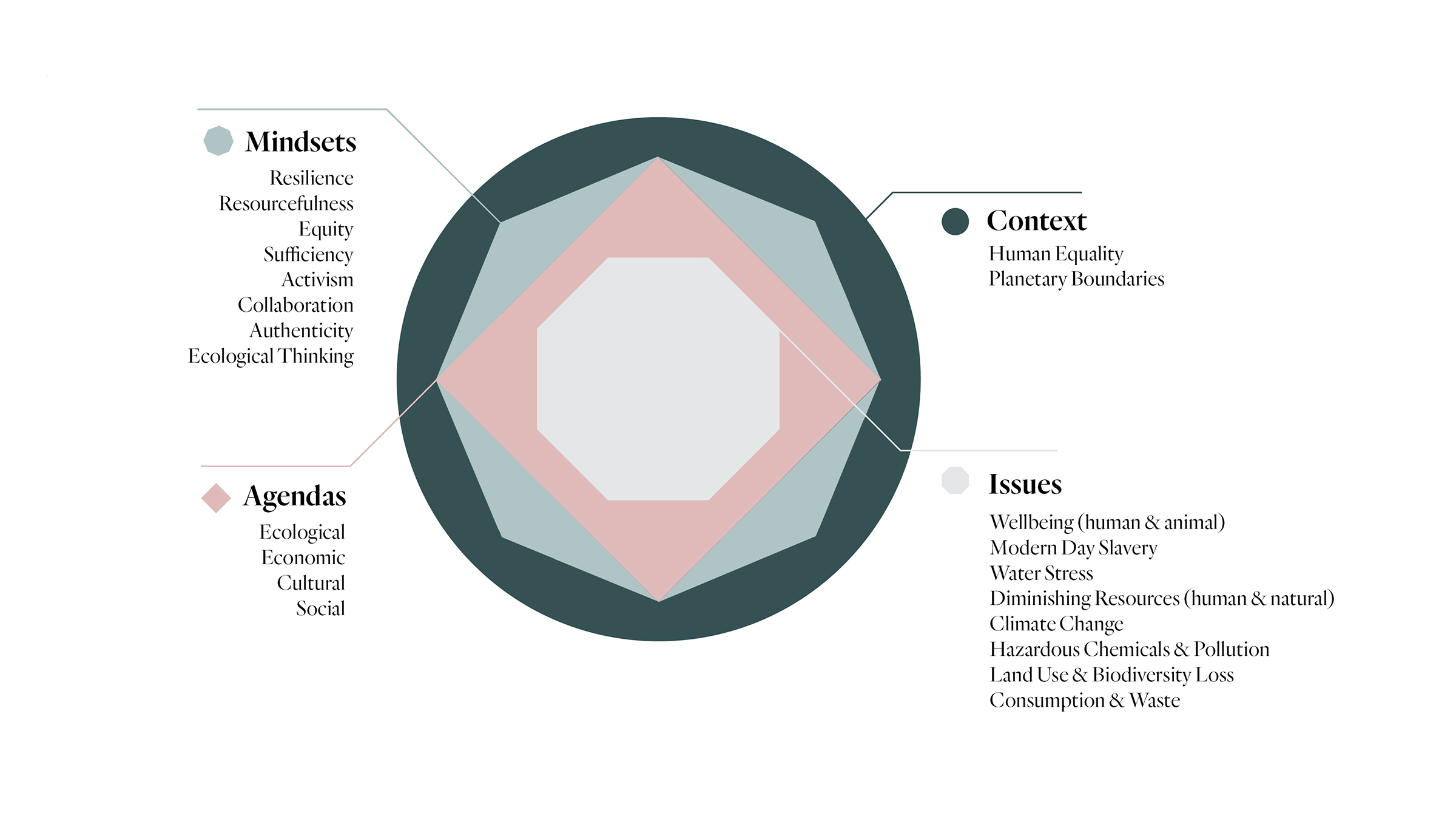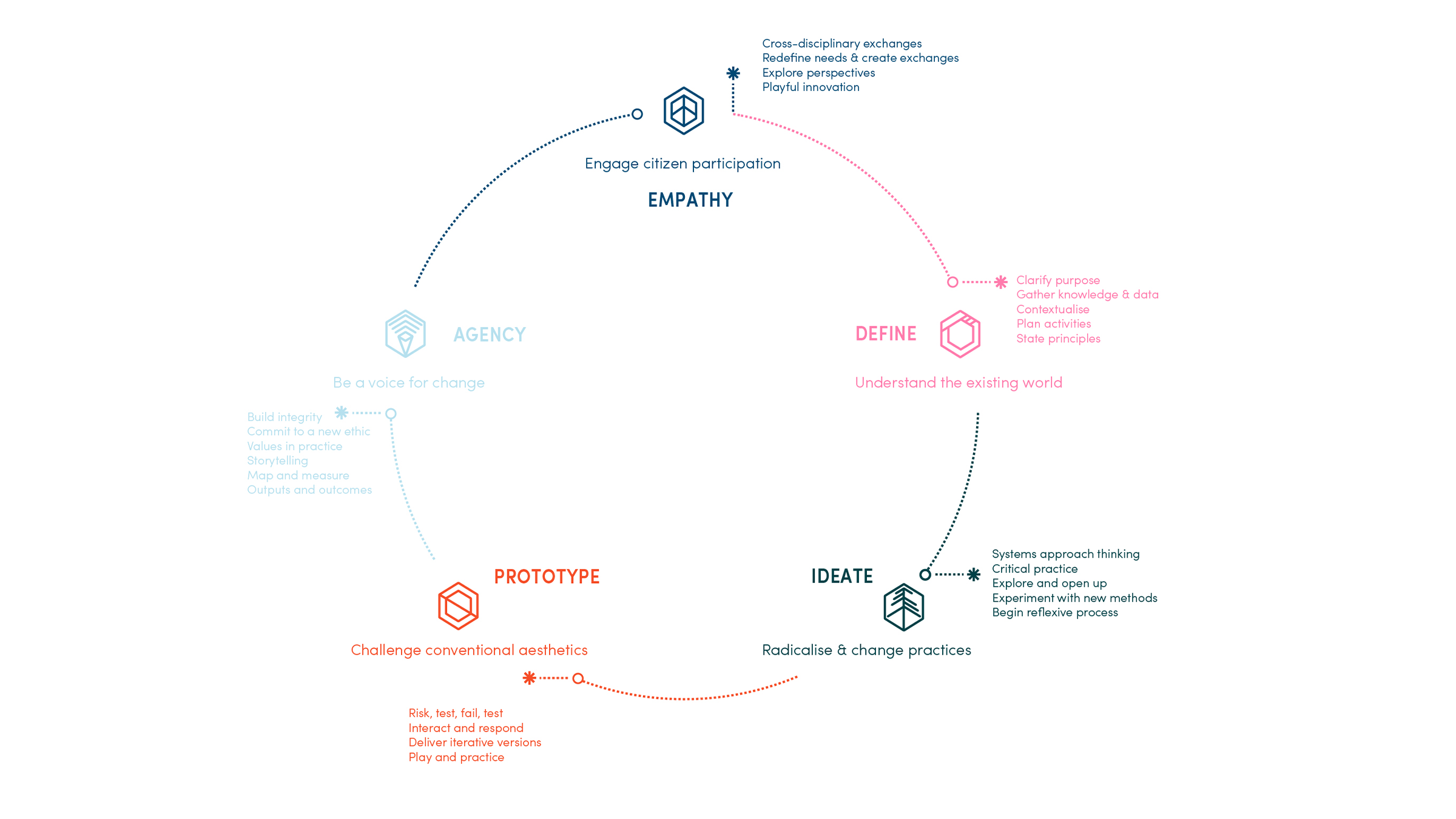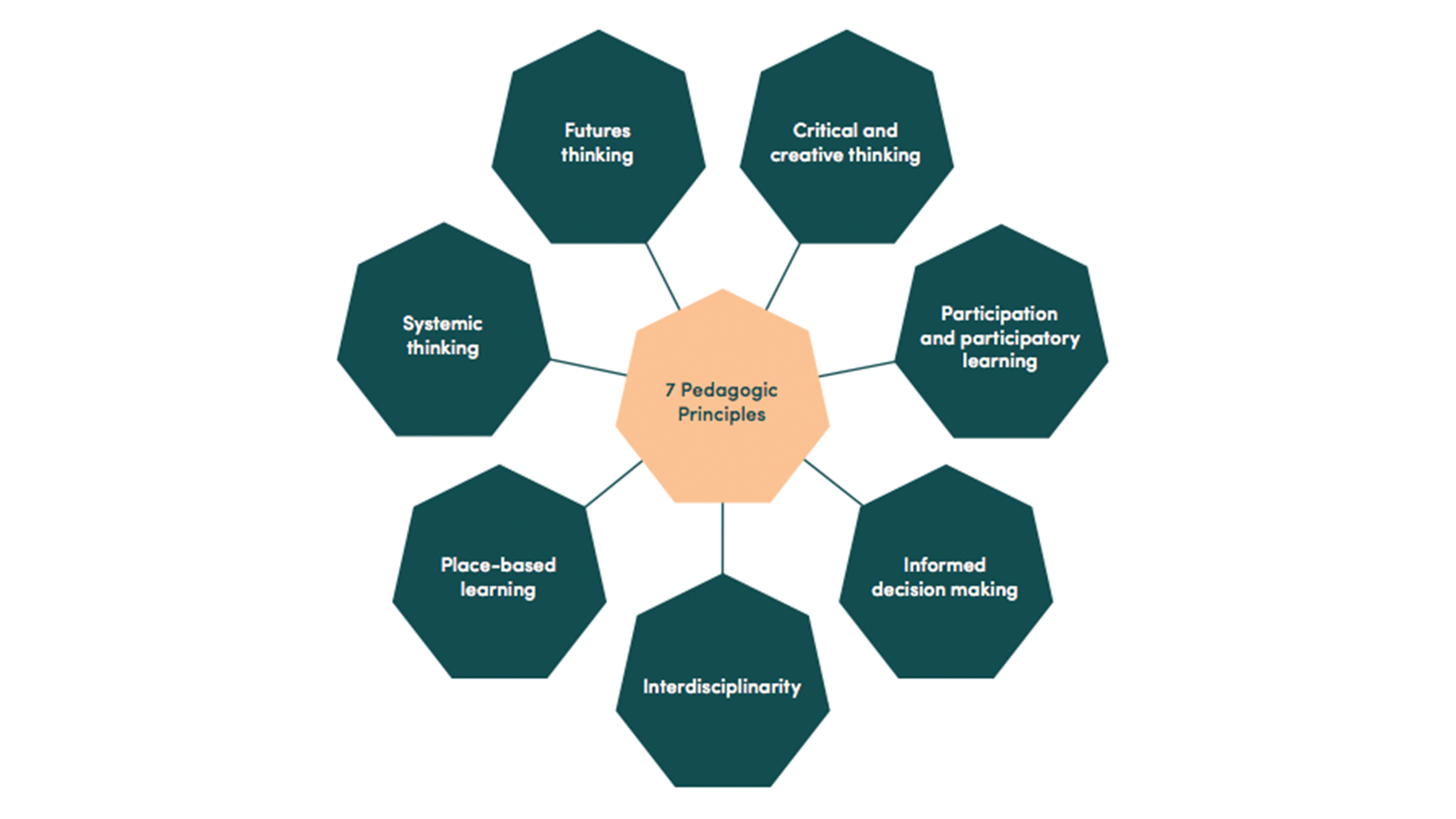Article by Centre for Sustainable Fashion | Monica Buchan-Ng | 10.07.2021
The ABCs of fashion and sustainability: The Sustainable Fashion Glossary
Sustainability can be an overwhelming topic. The conversation around fashion’s impact on people and planet is complex, multi-faceted and can sometimes feature contradictory viewpoints or information. The ways that the fashion industry talks about sustainability varies greatly across brands, organisations, activists, and people. How can we ensure we’re all on the same page? How can we start talking about sustainability in a way that’s consistent, accurate and understandable?
In 2019, the Centre for Sustainable Fashion (CSF) partnered with Condé Nast – the world-leading publisher whose media brands include Vogue, GQ and Glamour – to address this very problem. Condé Nast’s editors and journalists needed a resource that would help them to increase their sustainability knowledge, and help them to weave sustainability terms and concepts throughout their work.
The result of the collaboration is The Sustainable Fashion Glossary, a reference tool that aims to improve sustainability literacy for the fashion industry. The Glossary is:
An easy-to-use guide, divided into categories which relate to sustainability in fashion: its cultures, materials, production, buying habits and care practices.
A digital resource, open to all and published on a Creative Commons license to allow others to use and share the piece.
Written with over 250 terms, fully referenced for further reading.
Broken down into four key themes: climate emergency; environmental impacts of fashion; social, cultural and economic impacts of fashion; and key elements of fashion and sustainability, with 10 sub-themes that cover must-know aspects of fashion and sustainability.
As Alice Pilia, Chair of Global Sustainability Steering Committee at Condé Nast, states, “It is imperative the words we choose are accurate and underpinned with knowledge and understanding. It is our belief that educating our global teams and audiences on the definitions of key sustainability concepts, supported by fact-based explanations and references, is a pivotal first step towards better climate journalism and ultimately a more sustainable future.”

How was The Sustainable Fashion Glossary made?
The Glossary is the product of a collaboration between academia and industry, with input from three core groups: researchers, editors and students. This process ensured that the resource is academically rigorous and based on accurate, peer-reviewed research; that it is usable, understandable and drives fashion media discourse; and that the perspectives and priorities of the next generation are addressed.
The Glossary methodology followed a process that included an extensive landscape review, the creation of an information hierarchy, term and concept drafting; and prototype testing. The lead researchers, Dr Mila Burcikova and Professor Dilys Williams, based the methodology on CSF’s core guiding principles and frameworks including the CSF Framework for Sustainability, the Design Life Cycle, and the Pedagogic Principles.(1-3)



Vogue Editors provided the fashion media perspective, reflecting the priorities of the sustainability discourse in their region – such as the importance of heritage crafts and craft clusters in India, or opening texts that introduce concepts for readers that are earlier in their sustainability journey. They played the role of both audience and contributor, tailoring the Glossary’s tone and style to their needs as journalists.
The Glossary was also reviewed by an international network of academics from across the world, ensuring global relevance for the terms and themes. Researchers from India, China, the United States and Latin America have all contributed to the Glossary development with terms reflective of the sustainability discourse in each of their locations.
And finally, the Glossary was user-tested with students at BA and MA level from across media, communications and journalism courses from Condé Nast College of Fashion & Design and London College of Fashion. They used the Glossary terms and themes to identify the issues they’re passionate about, learn more about them and develop their own sustainability-focused pieces.

How has the Sustainable Fashion Glossary been used so far?
Since its launch in May 2020, the Glossary has become the go-to sustainability resource for editors and journalists at Condé Nast’s fashion titles. Vogue Italia references it daily; Sustainability Editor, Vogue, Emily Chan picks out must-know terms for readers; and it reflects Condé Nast’s ambition to become an authoritative voice on the topics it covers, shaping cultures and weaving sustainability into special issues, features and everyday content.
Within academia, the Glossary has been included as a resource in online courses, databases and guidebooks, providing a tool for researching specific sustainability topics and helping readers to navigate complex themes. It fills a gap in the sustainability space by providing an extensive set of consistent, robust and accessible definitions; and helps learners to gain a shared understanding of the problems facing the fashion industry by clarifying and socialising core terms and concepts.
The Glossary is being translated into multiple languages, giving wider access to the resource – including through voluntary project Climate Cardinals. “As founder and executive director, and United Nations Youth Climate Change Advisor Sophia Kianni explains, “teaching people about sustainable fashion is a great way to make climate education more digestible. Climate science can be used to explain why we need to manufacture and buy clothes more thoughtfully. Climate Cardinals believes that climate education needs to be available to people in languages they speak and understand. By translating climate information into languages other than English, we can ensure as many people as possible are informed about sustainability issues such as fast fashion.”
Condé Nast is also assessing the appetite for other language versions, alongside editorial efforts in translating some Glossary extracts into local languages.
How can you get involved?
Access the Glossary now via its dedicated platform: The Sustainable Fashion Glossary
Keep an eye out for the next Voice in this series, exploring the different ways you can use the Glossary
Keen to reduce your own impacts as a fashion creative? Gain more knowledge on sustainability, via our range of resources:
Take our open-source online course Fashion Values: Nature.
Read our Methods, 30-minute educational resources with a spotlight on the relationship between fashion and nature.
Read further Voices on Fashion Values.
___ References:
Williams, D. (2019). Fashion Design for Sustainability: A Framework for Participatory Practice. In: LeNS World Distributed Conference, 3 April 2019.
Williams, D. (2013). Fashion Education in Sustainability: Change Through Experiential Crossings. In: TEESNET Global Citizenship Sixth Annual Conference, 11 July 2013, London South Bank University.
Williams, D. (2013). Fashion Education in Sustainability: Change Through Experiential Crossings. In: TEESNET Global Citizenship Sixth Annual Conference, 11 July 2013, London South Bank University.